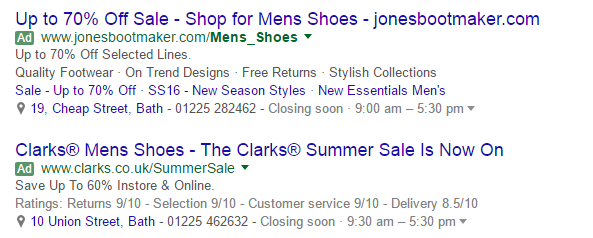Google is the new Twitter with its new Expanded Text Ads

Tuesday saw the launch of Google’s new Expanded Text Ads (ETAs for those of you who love a TLA). You may now notice in the paid-for search results that you get a lot more real estate for your money – 47% to be exact.
The old format headline with a 25-character limit and two lines of 35 characters has been replaced by 2 headlines of 30 characters and one 80-character slot for body copy. So you now get 140 characters in total to play with.
Where have we seen that before? Maybe someone should tell Twitter?
Below are a couple of examples when I ran a quick search for ‘men’s shoes’ to give you a taste of what the new format looks like:

That aside, the main question you might be asking is, why? It is all part of an overhaul of Google’s core paid search business displaying text ads, which hasn’t changed a whole lot from a user perspective since, well I can’t remember when. A long time.
Ultimately, because of the ever-increasing number of mobile searches, Google has been trying to work out the best way to display paid-for search results to mobile users. This started with getting rid of paid ads down the right-hand side for desktop searches to bring them into line with mobile results pages. The thinking behind increasing the character count for text ads is that mobile users need to be given more information relating to their search. This will then decide on whether to click or not easier and more informed.
The other question you may be asking is, so what? Well, what this means is there is now much more space to play with. Rather than trying to cram in the basic premise of what you’re trying to say, there will be much more scope to be descriptive, emotive, playful and maybe even funny (Google guidelines allowing).
The main benefit of this is increased click-through rate. Some advertisers have seen a 12-20% increase in CTR with the new ad formats in beta testing. This will make writing and optimising your ad copy even more important and may take it out of the domain of the PPC specialist and into the realm of the creative copywriter.



